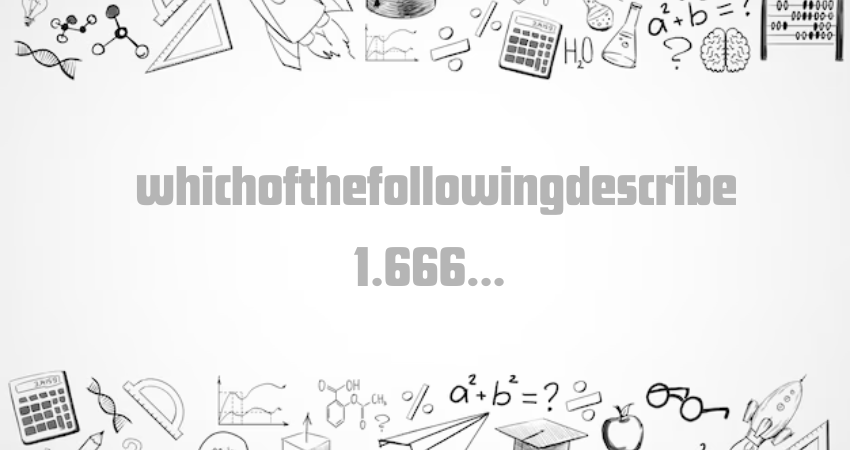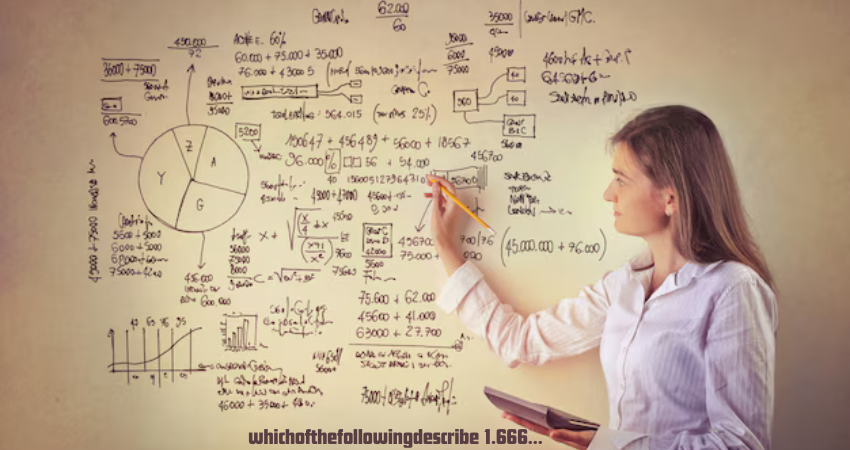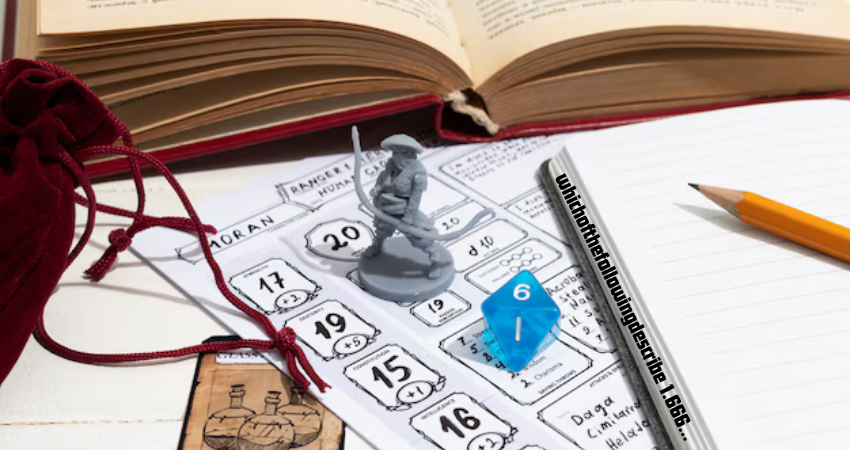What is whichofthefollowingdescribe 1.666… ?
It isn’t merely a sequence of digits repeating into the abyss. No, it is a melody sung by mathematics—a harmonious echo reverberating through time. This number, caught in the endless loop of its decimal self, embodies more than mere calculation. It holds the power to awe, to inspire, and to connect. But what truly describes it?
Breathe in, dear reader, and let us journey through this rhythmic landscape.
A Fraction’s Whisper: The Root of 1.666…
Born of Ratios, Borne on Repetition
In its truest form, whichofthefollowingdescribe 1.666… is the fractional embrace of 5 divided by 3. Simple, isn’t it? Yet its decimal form is an infinite cascade, a reminder that within simplicity lies the eternal.
What Does It Mean to Repeat?
This is no ordinary number. Its repeating nature—those 6s trailing endlessly—calls to mind waves lapping on a shore, persistent yet soothing. It repeats, not out of monotony, but out of perfection.

A Rational Revelation
The Rational and the Infinite
Though its repetition may seem irrational, its soul is rooted in rationality. 1.666… is, after all, a rational number. A fraction bound in clarity, yet free in expression.
The Power of Rational Infinity
To some, the repeating 6s signify limitation. But isn’t it the opposite? Isn’t its endlessness a gift, a symbol of what we can never fully grasp?
The Geometry of 1.666…
A Ratio of Perfection
Step into the world of proportions, and you’ll see this number’s grace. As 5:3, it mirrors relationships found in nature and art—where balance is beauty and repetition is serenity.
The Philosophical Impulse
What Does 1.666… Teach Us?
It tells us that not all infinities are cold or distant. Some infinities, like this one, are warm and inviting, asking us to linger and marvel.
Humanity in Numbers
Do we not, too, repeat ourselves? Day after day, moment after moment? The loop of life mirrors the eternal dance of 1.666…, a reminder that repetition holds the seeds of growth.
In Literature and Lore
Numbers That Tell Stories
Throughout history, repeating decimals have enchanted minds. 1.666… is no exception, a quiet companion in the story of human curiosity.
The Shadow of Misinterpretation
Myths Surrounding Repeating Decimals
Some may see whichofthefollowingdescribe 1.666… as incomplete. But what is completion if not the embrace of the infinite? Let us dispel such shadows and celebrate its endless rhythm.
1.666… is more than just a number—it’s a glimpse into the eternal, a melody of mathematics, repeating endlessly like the waves of the ocean that never truly touch the shore. This number, born from the fraction 5/3, is a paradox of simplicity and complexity, carrying the essence of infinity within its repeating digits.
In its simplest form, 1.666… is a fraction—just a small piece of a whole. But as its decimal stretches onward, it transforms into something more profound. Its repeated 6s echo, softly, like a heart that never tires of beating. There’s something deeply human in this number—a rhythm that resonates with the repetition of life itself.
The Dance of Rationality and Infinity
At first glance, whichofthefollowingdescribe 1.666… may seem like just another decimal, just another calculation. But within it, lies an endless dance of rationality and infinity. Though it is a rational number—one that can be expressed as a fraction—it holds the mystery of the infinite. It’s as if time itself has wrapped itself into a loop, where each repetition is both a return to the beginning and a step forward into the unknown.
The Infinite Circle of Repetition
Isn’t it curious how something that repeats forever can feel so constant, so steady? The endless stream of 6s, as if the universe itself could never stop counting, reflecting an eternal rhythm that cannot be captured, only felt. Each 6 adds to the dance, pulling us deeper into the mystery of the number, reminding us that even in the smallest things, there can be a vast, uncharted expanse.
Perhaps, in some way, this repetition is a metaphor for our own lives. We, too, repeat. We return to moments, thoughts, and places, over and over, yet every return is slightly different, a little more worn by time, but still alive with purpose.
A Symbol of Balance
Whichofthefollowingdescribe 1.666… is also a number of balance. It lies between 1 and 2, hovering in a delicate space that is both a beginning and an end. As a ratio, 5:3, it speaks of harmony—a proportion seen in art, nature, and architecture. It’s a number that bridges the gap between whole and part, creating a seamless connection between the two, reminding us of the beauty in balance.
In the world of ratios, this number exists not as a fraction out of place but as a perfect reflection of the symmetry around us. It is the delicate curve of a leaf, the subtle sway of a tree, and the rhythm of breath.

A Conclusion Beyond Time
Whichofthefollowingdescribe 1.666… is a number that invites contemplation. It doesn’t merely exist—it pulses with life, with a quiet force that transcends its mathematical roots. It reminds us that even the most seemingly simple things can hold endless layers, waiting to be discovered. The repetition of the 6s, the unbroken rhythm, tells us that there is always more to explore, more to understand, more to wonder at in the infinite circle of life.
In the end, 1.666… is more than a number. It is a journey, a reflection, a dance of infinity, a bridge between what is and what could be. It is, in its repeating nature, a reminder that everything—no matter how simple—can hold an endless story within.
FAQs
Q1: What is 1.666… as a fraction?
A: It is the fractional equivalent of 5/3.
Q2: Is 1.666… a rational number?
A: Yes, it is rational because it can be expressed as a fraction.
Q3: Why does 1.666… repeat?
A: Repeating decimals arise when dividing numbers in which the divisor does not perfectly fit into the base-10 system.
Q4: How does 1.666… relate to infinity?
A: Its repeating nature symbolizes an infinite sequence, a concept deeply tied to the mathematical notion of eternity.
Q5: What can 1.666… teach us about life?
A: It reminds us of the beauty in repetition and the infinite possibilities within finite frameworks.


